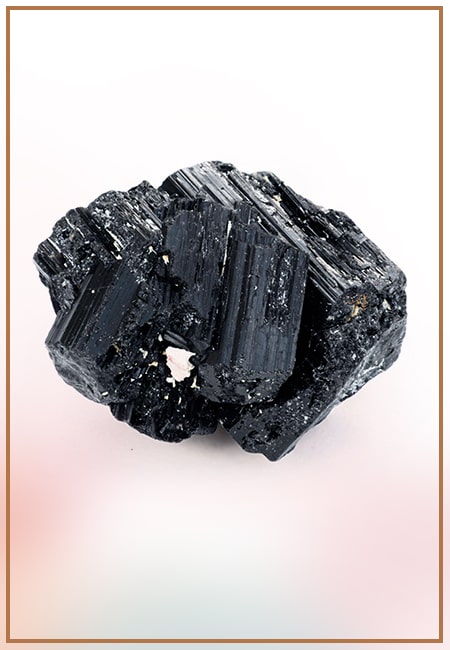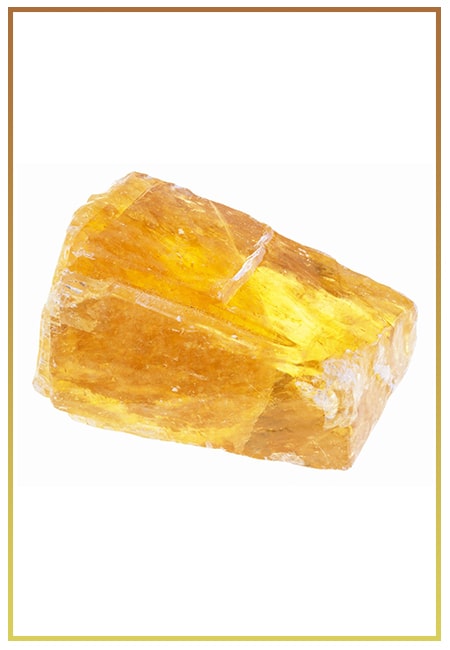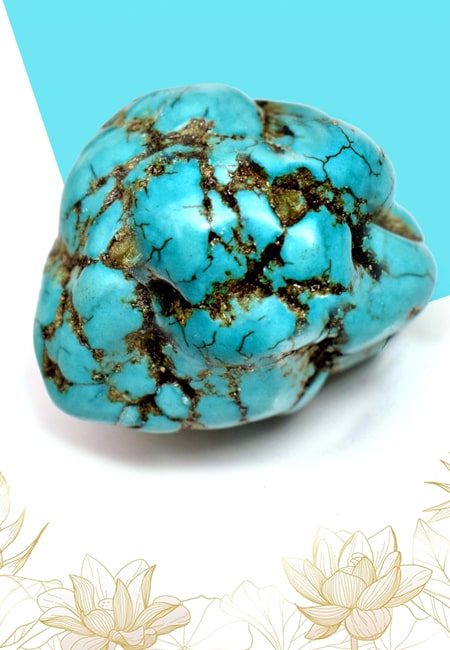- Written By Team DWS
- Festivals
- October 24, 2025
The Divine Awakens! Significance and Rituals of Dev Uthani Ekadashi
Introduction: The Dawn of Divine Awakening
After a long divine slumber that begins on Devshayani Ekadashi, Lord Vishnu — the Preserver of the Universe — awakens on Dev Uthani Ekadashi, also known as Prabodhini Ekadashi. This sacred day marks the end of the four-month period of Chaturmas, during which it is believed that Lord Vishnu rests on the cosmic serpent Sheshnag in the celestial ocean, Ksheer Sagar.
When the Lord awakens, the universe stirs with renewed energy. The period from Devshayani to Dev Uthani Ekadashi symbolizes introspection, rest, and renewal — for gods, nature, and humans alike. And as the divine awakens, auspicious activities such as weddings, new business ventures, and housewarming ceremonies begin again.
Celebrated on the 11th day (Ekadashi) of the Shukla Paksha in the month of Kartik (usually November), this festival holds immense spiritual and cultural significance. It is especially celebrated with grandeur in Vrindavan, Mathura, Nathdwara, Pushkar, and Varanasi.
638969141498181074.jpg)
Mythological Overview: The Story of Lord Vishnu’s Sleep and Awakening
According to Hindu mythology, the story of Dev Uthani Ekadashi begins at the cosmic level. After the completion of creation (as per one of the Yugas), Lord Vishnu began His deep slumber for four months, known as Chaturmas, starting from Devshayani Ekadashi in the month of Ashadha and ending on Dev Uthani Ekadashi in Kartik.
It is said that during this divine rest, Lord Vishnu reclines on Ananta Shesh, the serpent of infinity, floating peacefully on the ocean of milk. His sleep signifies balance — a time when the universe recalibrates. The Devas (celestial beings) patiently await His awakening to restore divine order and bless devotees once again.
Various Puranas — including Padma Purana and Skanda Purana — mention that during Chaturmas, spiritual disciplines and introspection carry more reward since the gods themselves remain in meditative rest.
When Lord Vishnu awakens on Dev Uthani Ekadashi, His energy radiates through creation, marking an auspicious transition — from dormancy to divine dynamism. People honor this cosmic event through fasting, prayer, and ritual offerings, welcoming the revived cycle of prosperity and faith.
________________________________________
Spiritual Symbolism of Dev Uthani Ekadashi
The concept of Lord Vishnu’s sleep and awakening can be interpreted beyond myth — as a spiritual metaphor for human consciousness.
During Chaturmas, nature slows down, rains fall, and minds tend to turn inward. It is a period for reflection, self-restraint, and purification. Dev Uthani Ekadashi, therefore, represents spiritual reawakening — the rediscovery of divine consciousness within oneself.
Here are the deeper symbolisms connected to this Ekadashi:
- Divine Rest and Renewal: The divine sleep symbolizes the cosmic pause, reminding us that rest is necessary before renewal.
- Awakening of Awareness: Vishnu’s awakening inspires mental and emotional rejuvenation.
- Restart of Good Deeds: After Chaturmas, worldly responsibilities resume — marriages, social rituals, and creative pursuits — all under auspicious blessings.
- Victory of Clarity Over Slumber: Spiritually, this day invites all to awaken from ignorance and embrace the light of wisdom.
This balance between stillness and action, reflection and motion, defines the philosophical spirit of Dev Uthani Ekadashi.
________________________________________
The Holy Union: Lord Vishnu and Goddess Tulsi
A unique aspect of Dev Uthani Ekadashi is the Tulsi Vivah, the symbolic marriage of Tulsi Mata (Holy Basil) to Lord Vishnu in the form of Shaligram or Vishnu idol.
According to legend, Tulsi was the incarnation of Vrinda, a pious devotee of Lord Vishnu and wife of the demon king Jalandhar. Her unwavering devotion protected her husband from being defeated. To restore cosmic balance, Lord Vishnu intervened by taking the form of Jalandhar and breaking her chastity vow, leading to his downfall.
When Vrinda discovered the truth, she cursed Lord Vishnu to turn into a black stone — Shaligram. After her death, she was reborn as the holy Tulsi plant. To honor her devotion and absolution, Lord Vishnu promised to marry her on Dev Uthani Ekadashi.
Since then, Tulsi Vivah is celebrated across India on this sacred day — symbolizing divine unity, renewal of dharmic energy, and the onset of the wedding season.
________________________________________
Tulsi Vivah Ritual: A Symbolic Celebration
The Tulsi Vivah is celebrated both in temples and homes with joy and decorative rituals reminiscent of a traditional Hindu wedding. The ceremony signifies the divine harmony of nature and spirit, as Tulsi represents Earth and Vishnu represents the cosmic preserver.
Key Ritual Steps of Tulsi Vivah
- Preparation: On the morning of Dev Uthani Ekadashi, devotees clean their homes, decorate courtyards with rangoli, and place decorated pots (kalash) near Tulsi plants.
- Mandap Decoration: A small mandap (wedding canopy) is created around the Tulsi plant with colorful fabrics, sugarcane sticks, and marigold flowers.
- Vishnu Idol Setup: The idol or Shaligram is decorated like a groom. Both are adorned with garlands and ornaments.
- Sacred Marriage: The priest or head of the household performs the rituals, chanting mantras while offering flowers, rice, and sweets.
- Fast and Feast: Devotees observe fasting until the ceremony concludes and then break the fast with sattvic (pure) food offerings.
The marriage between Tulsi and Vishnu symbolizes unity, purity, and balance between material and spiritual life — a lesson central to Hindu philosophy.
________________________________________
Observances and Rituals of Dev Uthani Ekadashi
While regional practices vary, the emotional and devotional essence remains constant. Devotees wake early, take a holy bath (often in the Ganga, Yamuna, or sacred ponds), and perform Lord Vishnu puja.
Common Rituals Across India
- Fasting (Upvaas): Devotees observe Nirjala Ekadashi (without water) or partial fasting. Fruits, milk, and Tulsi leaves are consumed while grains and pulses are avoided.
- Lord Vishnu Puja: Idol or picture of Lord Vishnu resting on Ananta Shesh is worshipped with lamps, flowers, incense, and recitation of Vishnu Sahasranama (Thousand Names of Vishnu).
- Reading of Katha: Scriptures narrating the Dev Uthani Ekadashi Vrat Katha are recited to understand its origin and blessings.
- Lighting Lamps: Diyas (lamps) are placed around the tulsi plant, homes, and temples, symbolizing removal of ignorance through divine light.
- Charity (Daan): It is believed that donating food, clothes, and lamps brings merit and forgiveness.
In rural and temple settings, devotees create symbolic “beds” depicting Vishnu’s awakening. Bells, conch shells, and hymns are sung to welcome the reawakened deity.
________________________________________
Regional Celebrations: Culture and Faith in Harmony
North India
In Uttar Pradesh, Bihar, and Uttarakhand, people decorate their Tulsi-ghar (Tulsi shrines) with lights and festoons. Towns like Mathura and Vrindavan hold grand Tulsi Vivah ceremonies accompanied by bhajans and kirtans.
Western India
In Gujarat, Rajasthan, and Maharashtra, this day is known for temple fairs and wedding-like preparations. Married women observe fasts for family prosperity and newlyweds participate in Tulsi Vivah seeking divine blessings.
Eastern India
In Bengal and Odisha, devotees offer coconut, fruits, and special sweets to Lord Vishnu and Tulsi. The day coincides with the harvest of winter crops and regional devotional music.
Southern India
In Andhra Pradesh, Karnataka, and Tamil Nadu, Dev Uthani Ekadashi is observed through Vishnu puja and community events. Temples hold grand processions of Shaligram idols with diyas illuminating temple courtyards.
________________________________________
The Four-Month Spiritual Cycle: Devshayani to Dev Uthani
The link between Devshayani Ekadashi and Dev Uthani Ekadashi forms one of the most sacred spiritual intervals in the Hindu calendar.
Duration — Chaturmas:
- Begins: Devshayani Ekadashi (Ashadha Shukla Paksha Ekadashi)
- Ends: Dev Uthani Ekadashi (Kartik Shukla Paksha Ekadashi)
During this time, it is believed that auspicious ceremonies like marriages or building new ventures are suspended since the gods rest. People instead focus on fasting, introspection, chanting, and meditation — spiritual “seed planting” that culminates in the harvest of blessings when Vishnu awakens.
When Lord Vishnu arises, it signifies the resumption of positive karma, prosperity, and auspicious undertakings. Symbolically, the Earth too awakens to a new cycle of fertility and abundance after the monsoon.
________________________________________
Scriptures and Religious References
Hindu texts give profound insights into the power and importance of observing Dev Uthani Ekadashi.
- Padma Purana: Emphasizes that observing Ekadashi fasts washes away sins and grants liberation.
- Bhavishya Purana: Highlights Dev Uthani as the day when Lord Vishnu blesses devotees who have practiced restraint and devotion during Chaturmas.
- Skanda Purana: Details the rituals of Tulsi Vivah and the significance of Tulsi’s divine purity.
Spiritual leaders often describe Dev Uthani as not just a ritual occasion but a period for reawakening consciousness, symbolizing the eternal cycle of sleep, awakening, and renewal that mirrors human life.
________________________________________
Observing the Dev Uthani Vrat: Dos and Don’ts
The Dev Uthani Ekadashi Vrat (fast) is considered highly sacred. Observing it with devotion brings peace, prosperity, and spiritual progress.
Do’s:
- Wake up early, take a holy bath, and meditate on Lord Vishnu’s name.
- Place a Tulsi leaf in offerings, regardless of rituals performed.
- Read or listen to Dev Uthani Katha.
- Donate food, lamps, or clothes to the needy.
- Break the fast on Dwadashi (next morning) after prayers.
Don’ts:
- Avoid rice, grains, onion, garlic, and non-vegetarian food.
- Refrain from anger, negative speech, or violence.
- Avoid sleeping during day hours of Ekadashi as it reduces its merit.
The vrat is more about mental discipline and faith than physical abstinence — a way to transform inner awareness.
________________________________________
Environmental and Symbolic Relevance of the Tulsi Plant
The sacred Tulsi plant celebrated during Dev Uthani Ekadashi holds immense scientific and ecological value. Revered as a purifier of both body and spirit, Tulsi’s presence in households is both spiritual and environmental.
- Purification of Air: Tulsi releases oxygen and absorbs harmful gases, maintaining environmental balance.
- Medicinal Properties: Known for immunity-boosting and antibacterial properties, it symbolizes divine health.
- Spiritual Symbol: Tulsi represents selfless devotion, reminding devotees of steadfastness and purity.
The Tulsi Vivah ritual thus serves as a beautiful intersection between spiritual faith and ecological preservation — a practice that honors life and nature simultaneously.
________________________________________
The Awakening Within: Lessons from Dev Uthani Ekadashi
Beyond ritual worship and fasting, the essence of Dev Uthani Ekadashi lies in personal transformation. The festival’s message can be internalized in daily life:
- Awaken Inner Awareness: Just as Vishnu wakes from cosmic sleep, we must awaken from forgetfulness — realigning with our inner divinity.
- Balance Work and Rest: Reflection followed by action mirrors Vishnu’s rest and awakening — a timeless natural rhythm.
- Embrace Forgiveness: Dev Uthani teaches the power of absolution and renewal — beginning anew with compassion.
- Honor Nature: Through Tulsi, the Earth reminds us that faith and ecology are deeply connected.
The divine awakening invites self-realization: to rise beyond ignorance, reignite purpose, and walk the dharmic path of compassion and truth.
________________________________________
Folk Traditions and Festive Joy
On the night of Dev Uthani Ekadashi, joyous processions, music, and bhajans fill villages and temple streets. Traditional songs narrate the story of Lord Vishnu’s awakening. Women perform prayers for family happiness and prosperity.
In parts of Rajasthan and Gujarat, people recreate the divine wedding scene with clay idols of Vishnu and Tulsi, singing folk wedding songs (geets). Small fairs, food stalls, and devotional gatherings add to the community celebration, blending spirituality with festive delight.
Firecrackers, decorative lights, and floral arrangements illuminate temples, reminding all that light always follows awakening.
638969142050711353.jpg)
The Eternal Message of Dev Uthani Ekadashi
Dev Uthani Ekadashi is more than just a sacred observance; it is a reminder of renewal at every level — cosmic, natural, and personal. The sleeping and awakening of Lord Vishnu conveys that periods of rest and revival are essential for maintaining universal harmony.
The symbolic marriage of Tulsi and Vishnu highlights the union of devotion and divinity, nature and spirituality, discipline and delight.
As devotees honor Lord Vishnu’s awakening, they are called to awaken their higher consciousness, shedding laziness, doubt, and ego to embrace love, service, and truth.
On this auspicious day, may every heart echo the spirit of awakening — a return to purity, peace, and purpose under the divine light of Vishnu.
Om Namo Bhagavate Vasudevaya.
Popular on Blogs

Black Tourmaline: Meaning, Healing Properties, Fascinating Facts, Powerful Attributes, Versatile Uses, and Beyond
September 05, 2023 / BY Team DWS
Black Tourmaline, also known as Schorl, is a highly revered crystal with incredible metaphysical properties. It derives its name from the Dutch word "turamali," meaning "stone with ..

Carnelian Stone: Meaning, Healing Properties, Power, Facts, Color, Uses and More
December 26, 2023 / BY Team DWS
Carnelian is a vibrant and captivating gemstone that holds a plethora of meanings, healing properties, and powers. Its warm and fiery energy makes it a popular choice among crystal ..

Citrine: Exploring its Meaning, Healing Properties, Fascinating Facts, Powers, Versatile Uses, and Much More
November 18, 2023 / BY Team DWS
Citrine, with its warm golden hues, has captured the attention and imagination of people for centuries. This beautiful gemstone, commonly associated with wealth and prosperity, hol ..

Black Onyx: Unveiling the Meaning, Healing Properties, Fascinating Facts, Powerful Attributes, Versatile Uses, and Beyond
July 25, 2023 / BY Team DWS
Black Onyx, a striking gemstone admired for its deep black hue and elegant appearance, has captivated people for centuries. In this comprehensive guide, we will delve into the mean ..

Unveiling the Mysteries of Turquoise Stone: Exploring its Meaning, Healing Properties, Power, Facts, Color, Uses, and More
December 05, 2023 / BY Team DWS
Turquoise, with its captivating blue-green hue, has been adorning jewelry and artifacts for centuries. This striking stone has a rich history, rich symbolism, and a plethora of int ..

The History Behind The Popularity of Red Agate
December 23, 2022 / BY Team DWS
An Agate is a type of magma rock that takes many years till it is washed out naturally into the water. And that is the reason this stone has elements of water. This beautiful stone ..

Bloodstone: Unveiling the Meaning, Healing Properties, Facts, Powers, Uses, and More
August 21, 2023 / BY Team DWS
Bloodstone, with its captivating deep green color with specks of red, is a mesmerizing gemstone that has fascinated civilizations for centuries. It possesses unique healing propert ..

Plan a Perfect Valentine's Week with Our Valentine Week List 2025
January 22, 2024 / BY Team DWS
Valentine's Day is undoubtedly the most romantic day of the year, but we believe that one day is just not enough to express your love and make your partner feel special. That's why ..


